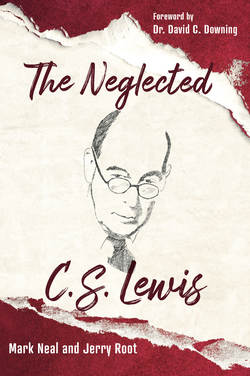Читать книгу The Neglected C. S. Lewis - Mark Neal - Страница 14
На сайте Литреса книга снята с продажи.
Setting the Stage for Edmund Spenser
ОглавлениеChaucer has set the stage for the coming of Edmund Spenser’s The Faerie Queene, with its elevation of marriage as the place where romantic human passions ought to have their highest expression. Still, Lewis has his readers consider a few more phases in the transition from the idealization of adultery to God’s ideal—in Christian marriage—as the proper place, the God-given place, to express and find fulfillment for one’s earthly passions.
For example, Lewis observes that John Gower (1330–1408) is first among these transitional poets, and Lewis says Gower’s significant contribution lies in his explicit concern for form and unity. The great contribution he makes to the literature of this age is to take seeming contrasts and weave them together into a coherent whole.29 This feature in his writing resembles Christianity and how it works. If Christianity is true, and what is observed in the Scriptures is accurate, then existing tensions are often exacerbated in a fallen world. Estrangements lead to deeper estrangements and alienations proliferate unless they can be woven back together by grace. Thus, in Gower, as in Christianity, we see reconciled transcendence and immanence. Eternity can be encountered in mutability and God’s sovereignty and human free will may be harmonized and reconciled. So too, concord can be found between the genders: male and female can be made into one. The universe, created by the triune God, is a place where unity and diversity can coexist. This transition step found in Gower is important in the movement from courtly love to the Spenserian reconciliation 29 Lewis, 198–99. uniting passion and marital love with great literary success. Spenser, inheritor of all that has come before him, will rescue marriage from the challenge of courtly love and the practice of adultery. So Gower is an important link in the chain from Chaucer to Spenser.
Lewis again reminds his readers, “There are few absolute beginnings in literary history, but there is endless transformation.”30 While Lewis mentions many writers, the following will be sufficient to show that he keeps to his task. He is explaining how the literature of the Middle Ages went through incremental changes using allegory to connect passion and marriage.
The King’s Quair is the next highlighted by Lewis, and of this work Lewis wrote that James I of Scotland (1394–1437) “sat down to write what most emphatically deserves to be called ‘sum newe thing.’”31 This is because James wrote of his own love for the woman who became his wife. Lewis adds that in this work one sees clearly such transition that “As the love-longing becomes more cheerful it also becomes more moral.”32 Lewis describes The King’s Quair as the first modern book of love. Next, follows John Ludgate (c. 1371–1449) who wrote The Temple of Glas, in which the hero appeals to Venus that she might make a way not to “adultery but to marriage.”33 In a passage that makes the heart sink, Lewis descries the plight of young women in all times—be it in the Middle Ages, or today—who are trapped in the bondage of human trafficking, or groped by predators. Ludgate pleads on behalf of “young girls forced into marriage to mend their father’s estates, and for yet younger and more deeply wronged oblates, snatched from the nursery to the cloister for the good of their father’s souls.”34 This text is so contemporary. Each age has those who have drifted from a traditional view of marriage. The abusers become self-referential and thereby tend toward utilitarianism. In denying the humanity of others, their own is unwittingly diminished. The abuses against conjugal fidelity have underscored the need for some kind of restoration in every age. Again, this is a reason why the path charted in The Allegory of Love is so important, and in some ways, so contemporary.
In William Nevill’s (1497–1545) The Castle of Pleasure, the literary form develops into what Lewis calls “a moral allegory.”35 With Nevill, Lewis notes, “What was originally a moral necessity is becoming a structural characteristic” and “The love which he celebrates is a perfectly respectable love, ending in marriage.”36 The change is duly noted and the way is paved for Spenser’s The Faerie Queene.
